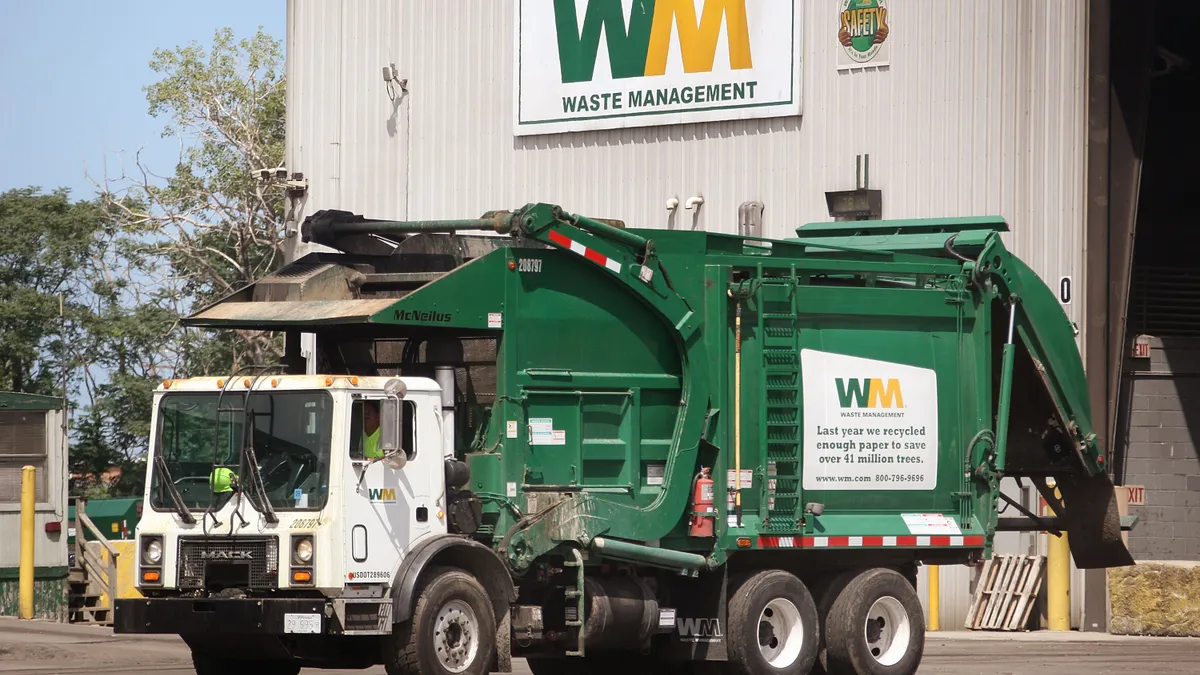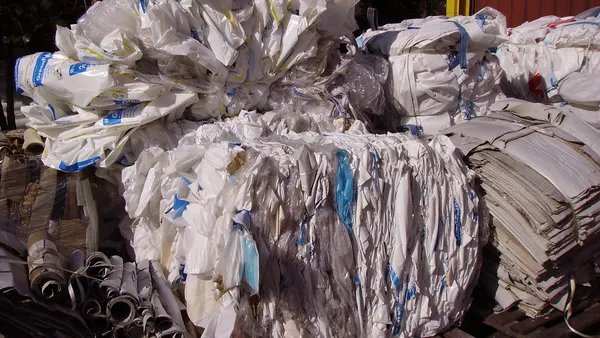Running any large municipal sanitation agency is complex enough. Running one while working under some of the most ambitious state recycling targets and launching the nation's largest commercial waste franchise system raises the stakes even higher.
Since the Los Angeles Bureau of Sanitation (LASAN) launched recycLA over the summer, it has become a focal point for recycling professionals around the country. The multi-billion dollar system, with 11 zones serviced by seven companies, is seen a sign that the franchise dreams of New York and others are possible. The attendant price increases for many customers so far are seen as a sign by detractors that such systems come with unjustified costs. As LASAN continues to work through this massive transition in the coming months, officials have asked for patience and promised results in 2018.
Throughout this very public process, the agency has also been pursuing multiple residential food waste diversion pilots, keeping up with the latest environmental directives from Sacramento and looking into the future of electric collection vehicles. All the while, West Coast commodity markets are more vulnerable to new trade policies from across the Pacific than they have been in years.
Director Enrique Zaldivar has been responsible for these projects and many others during his more than eight years on the job — out of a 30-plus year career. Waste Dive recently spoke to Zaldivar for his response to the recycLA criticism, how to make residents care about food waste diversion and, of course, China.
The following transcript has been edited for brevity and clarity.
WASTE DIVE: Did you expect this much backlash to the recycLA launch?
ENRIQUE ZALDIVAR: Whether it was fully expected or anticipated maybe that's a subject of some debate, but I think any time something of this magnitude is implemented...just on the massiveness of it alone, inherently there will be some growing pains. Whether it's bus fares, whether it's train fares, anything that has a direct retail cost associated with it by a service usually, it has an inherent heightened level of participation by the public.
The Los Angeles City Council has asked LASAN to explore any potential cost reduction measures, such as bin-sharing. Are any updates available on what that might look like or what other solutions may exist?
ZALDIVAR: There is something very fundamental that we know had not been marketed well enough, and had not been marketed at all, and yet it's at the very crux of the program — the ability for folks to have more of their waste generated going into the recycling stream, as opposed to not. That has a direct cost reduction effect, which frankly we had not promoted that enough and certainly not to the level that it works. So that has become a great source of cost reduction, because the less folks put in the residual waste stream the less they pay, either in frequency or in volume.
Though participation in the organics collection program comes with an additional cost and state law requires some commercial businesses to do so, correct?
ZALDIVAR: We're not tackling the organics in this wave of implementation yet, although we know that's going to be part of the program soon. Right now we're focusing on the service components that come with the first part of the program, which is the stability and the service level increases along with the provision of recycling. Then we're going to a normalization of service, where customers will get used to the new system, and then we move into optimization which means that both the customer and the recycLA service providers (RSP) will begin to truly capitalize on the efficiency side of things, including optimizing routes. That's even more exciting... If we are able to minimize further truck trips by optimizing dates of collection, as an example, you truly have a completely synchronized and optimized routing efficiency. We expect to have real data somewhere in the middle of 2018, working with the private RSP partners, so that we can quantify the benefits of the efficient system.
What progress are you making with organics diversion on the residential side?
ZALDIVAR: We're definitely drawing on our experience in dealing with the retail side of this business. It is very important that there be enough buy-in, complete buy-in, on the part of the residents. And number two, that there's not a lot of sacrificial ask that goes into the change that we are asking them to make to participate in something. As an example, when we began with the curbside recycling program we were asking folks to cut everything up, cardboard and newspaper, tie it with a three-knotted cord and if the wind blows faster than 20 miles an hour make sure you go out to rescue and bring it into your garage so that it doesn't blow all over the street. We were asking all these things for people to do, but you know they are also of course busy with everything else in life. So we don't want to be out of sync with life, right?
"We want to be candid with ourselves, we want to be introspective enough in all of this and not pretend like residents don't have their own concerns. In the end, we probably are going to provide multiple options."

Enrique Zaldivar
LASAN Director
Food waste is one of those [examples.] We're looking for what ends up being a best practice that will achieve our objectives and also be in alignment with residents' preferences. So we're piloting this in-sink grinder as a way of trying to see if folks would find that more convenient than us asking them to separate it in a pail, segregated somewhere in the house. We do weekly collection, so imagine if you hang on to food waste for a week in the Valley where it gets up to 110 degrees during the summer. We want to be candid with ourselves, we want to be introspective enough in all of this and not pretend like residents don't have their own concerns. In the end, we probably are going to provide multiple options. [This] will include the use of the in-sink grinder for those who prefer it that way or maybe on a case-by-case, this is being piloted, we just collect food waste separately in a bin or mix it with green waste, which we're also piloting.
So it sounds like you're not ruling out the potential for a curbside program, with the understanding that it might be in addition to in-sink in some areas. With the scale of L.A., is it possible you could offer some curbside organics collection in the way that New York and others are doing?
ZALDIVAR: I think what's going to be the more overriding criteria for us is if we end up with consensus on the preferred convenient method for the residents. Not having to segregate it, and separate it, and collect it separately and what have you, I would rather it not be that. But that's just my instinctive analysis. Right now we have not landed on either one, other than our instinctive sort of reaction to it. But we do not yet have a program that will have food waste collected separately from each of the homes. Not yet.
It's not a question of if, but more like when and how soon. We don't have a whole lot of time. So we're only running this pilot for I believe another six months, and then based on that we are going to arrive at a program recommendation.
Illegal dumping and street cleanliness has been an issue for a lot of cities. In L.A.'s Clean Streets Initiative, one solution has been putting more public bins out, but data collection is another factor in the program. Do you have a sense of what's more effective for cities in terms of increasing physical resources versus data collection?
ZALDIVAR: I think it's both. You might argue that we've been at this for all these years, and yet we haven't done some of these most recent practices and services...as basic as a street trash receptacle. That had not been the case. So through the Clean Streets program the attention was brought to it. The mayor provided the leadership and the funding, along with the City Council. Then the data clearly illustrated what maybe for others had always been the case, just because of the visibility of stuff and litter in the streets. I think making this more data-driven, more scientific, not only is it helpful and informative in the first rollout but also keeps us vigilant forever. We do not ever feel that we have resolved a problem and then grow complacent. Because the data will keep us vigilant on an ongoing basis. So it's powerful in the way that data can speak back to us, it's amazing.
LASAN has been piloting new electric collection trucks. A lot of companies and cities have been more focused on compressed natural gas. How is that pilot going so far, and why choose electric versus other fuels?
ZALDIVAR: I've been in this business now for 30-some years and the rate of evolution has just gotten so much faster. So when I got into this industry the big thing then was automation...Then came containerization...Then on the power train for the trucks. We went from diesel, which is when I got into this, to then a big change to natural gas. Starting with liquefied natural gas. So we started with hybrids. Then we went full bore with LNG, fully dedicated, no longer hybrids. And so that was our fuel of choice for about four years. Only to realize that LNG inherently brings with it a number of handling and processing challenges. For one, we needed to have very sophisticated fueling stations. We needed to have dedicated fuelers, properly equipped. So we moved away from LNG and moved over to CNG. We didn't need the complex infrastructure of LNG, along with all the handling challenges that it comes with it...As we are moving more and more into CNG, we realized, 'well, wait that's only a bridge technology until we move into electrification.' So now we have done exactly that and moved into piloting fully electric heavy-duty trucks.
So in the course of my 30 years I have seen probably seven different types of evolution and that will continue to only get faster. Is hydrogen anywhere in our future? Right now we're banking on electric and that's where we're going. But is that only going to be for five years until hydrogen replaces it? We're bringing on board four electric test trucks. [Eventually] there will be trucks, on a limited basis, available fully electric. In a year-and-a-half, maybe two years from now.
2017 has been a big year for the agency's work, but also a challenging one in terms of China's scrap import policies. How do you balance so much growth with the realities of the market?
ZALDIVAR: Being the second largest city in the country, we do touch on a lot of things, globally speaking. We're at the doorstep of the Pacific Rim and the dependability that we had had on their markets for export of recyclables, and yet realizing how much of our projects should depend on that or not. That's the other great benefit of recycLA, is that we truly now have brought to the fore the reach of some of these large companies. As you know, Waste Management and Republic [Services] are two of the seven recycLA companies. They have a reach in understanding things globally, which we stand to benefit from. As a combined market now, as a city market, we have a lot more leverage to exercise influence on the export markets or the domestic markets. Now we have twice the leverage.


















